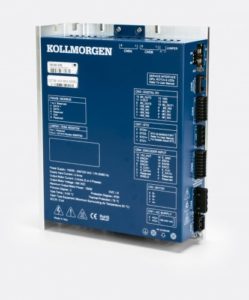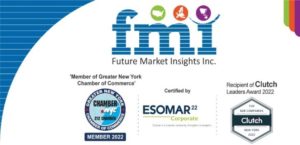ABB Q2
ABB reported a sharp increase in orders and profitability for the second quarter of 2006. Earnings before interest and taxes (EBIT) increased to $640 million from $371 million in the same quarter a year ago, reflecting ...
... good growth in the two product divisions, and yielding an EBIT margin of 10.7 percent.
from operating activities amounted to $337 million, an increase of $169 million compared to the same quarter in 2005.
"We continued to deliver strong results in the second quarter," said Fred Kindle, ABB President and CEO. "We are clearly benefiting from the strong global demand for improved power infrastructure and increased industrial efficiency. On top of that, our efforts to further improve our business performance continue to pay off and we look forward to a solid second half."
Summary of results
Group orders received increased 19 percent (local currencies: 18 percent) compared to the same quarter in 2005. Continuing demand growth in ABB's power and automation markets resulted in strong order increases in most divisions and regions - notably a 28-percent increase in Europe (local currencies: 25 percent). Large orders (more than $15 million) made up 13 percent of total orders in the quarter compared to 7 percent in the same quarter a year earlier.
Revenues in the second quarter grew 5 percent (local currencies: 5 percent) versus the year-earlier period. The high proportion of large projects in the order backlog, for which order execution and therefore revenue recognition may extend over several quarters, accounted for most of the difference between order and revenue growth. The order backlog at the end of June 2006 amounted to $15,671 million, an increase of 23 percent (local currencies: 19 percent) compared to the year before.
The higher EBIT and EBIT margin resulted primarily from higher revenues in the Power Products and Automation Products divisions, as well as improved project quality and execution in the Power Systems and Process Automation divisions. The year-on-year EBIT comparison also reflects the $66 million EBIT reduction in the 2005 period related to the transformer consolidation program.
ABB continued to strengthen its financial position in the second quarter of 2006 following the settlement of ABB's Combustion Engineering asbestos liabilities and two capital markets transactions (see Appendix I). Gearing at the end of the quarter was 36 percent compared to 50 percent at the end of the previous quarter, with a net cash position of $302 million compared to net debt of $427 million at the end of the first quarter of 2006.
Cash flow from operating activities was $337 million, an improvement of $169 million versus the second quarter of 2005. Cash flow from financing activities included the payment in May 2006 of a shareholders' dividend of $203 million for fiscal year 2005.
Finance net amounted to negative $64 million in the second quarter and included net charges of $43 million associated with the conversion of the company's previously outstanding $968-million, 4.625-percent convertible bonds, due in May 2007. This amount will be offset by a corresponding reduction in interest payments during the remainder of 2006. Included in the prior year amount were charges of approximately $40 million for non-asbestos-related litigation issues from the late 1990s.
The effective tax rate in the quarter was 30 percent compared to 37 percent in the same quarter in 2005, primarily the result of earnings increases in lower taxed countries.
Divisional performance Q2 2006
Orders improved in the second quarter in all businesses and regions, primarily on the strength of higher base orders. Investments continued by utility customers in western Europe to refurbish existing power infrastructure. In Asia and the Middle East, customer investments continued to support robust economic growth. As a result, orders in Europe, Asia and the Middle East rose at a double-digit pace. Orders in the Americas were modestly higher as continuing demand in the U.S. to replace aging equipment and meet increasing load requirements was dampened by lower order intake in Latin America, primarily Brazil.
Revenues were up in all businesses compared to the same quarter in 2005, reflecting both volume growth and higher prices to compensate for increased raw materials costs, primarily in the transformers business. EBIT more than doubled compared to the second quarter of last year. In addition to the positive impact of higher volumes, operational improvements and higher capacity utilization, the EBIT and EBIT margin comparisons reflect the $66 million EBIT reduction in the year-earlier period related to the transformer consolidation program announced in June 2005. Costs for the program in the second quarter of 2006 amounted to $3 million.
Orders increased in the second quarter of 2006 across all businesses, primarily due to a sharp increase in large orders. Orders grew strongest in Europe, as utilities in western Europe upgraded infrastructure, including power plants and substations, to increase system efficiency and offset higher energy prices. Investments in regional grid connections, such as a large order in Italy for an underwater power transmission link, also drove order growth. Orders in the Middle East and Africa grew, fueled mainly by the ongoing need for new power infrastructure. In Asia, orders were flat (higher in local currencies) as higher orders in India were partly offset by decreases in several other countries, including China. Orders decreased in the Americas as continued growth in North America was more than offset by a decrease in Latin America.
Revenues increased versus the same quarter in 2005 but at a slower pace than orders, reflecting the timing of revenues recorded from large projects in the order backlog. EBIT and EBIT margin increased significantly, primarily due to improved project selection and execution, and higher capacity utilization.
Automation Products division
Markets continued to develop favorably in the second quarter of 2006, driving higher orders received in all businesses and regions. Orders grew strongest in the power electronics, machines, drives and motors businesses. Regionally, orders were up in both eastern and western Europe. Orders grew in the Middle East and Africa, driven primarily by demand from the oil and gas sector. Orders from Asia were higher, led by India and China, and were up in the Americas, with growth continuing across most sectors in North America, particularly the U.S.
Revenues increased compared to the same quarter in 2005 due to higher volumes and price increases covering higher raw materials costs. Revenue growth and high levels of capacity utilization were the primary drivers of a 30-percent increase in EBIT and a higher EBIT margin versus the second quarter of 2005. EBIT also included a $34-million gain on the sale of real estate but it was offset by charges for downsizing operations in Europe and other operational measures.
Process Automation division
Demand for automation solutions, both base and large orders, continued to grow strongly across all sectors and most regions, driven mainly by the need for greater industrial efficiency in the face of high oil prices. The strongest growth was recorded in the marine, oil and gas, chemical and pharmaceutical, and pulp and paper businesses. Regionally, orders increased in Europe, the Americas and Asia, but were slightly lower in the Middle East and Africa compared to the same quarter the year before.
Revenues in the quarter were flat versus the second quarter of 2005 despite the very strong order increase, reflecting the timing of revenue recognition on project and system orders. Ongoing operational improvements and tighter execution of large projects resulted in a 15-percent increase in EBIT compared to the same quarter a year earlier despite the flat revenue development.
Robotics division
Orders decreased significantly in the second quarter as weak demand continued in the automotive market, which accounts for 75-80 percent of the division's business. Orders grew in the non-automotive general industry sectors, such as packaging, consumer electronics and food. Orders were lower in all regions.
Revenues were also lower compared to the same quarter in 2005, reflecting the decreased order backlog. The division continued implementing a series of operational measures announced in the first quarter of 2006 and, as a result, recorded related additional costs as well as reserves for a loss order in the systems business. As a result, EBIT and EBIT margin were sharply lower than in the same quarter of 2005. The company expects these measures to continue to impact the division's performance for the full year.
Non-core activities and Corporate
Non-core activities in the second quarter generated EBIT of $17 million versus an EBIT loss of $7 million in the same quarter in 2005. Headquarters and stewardship costs decreased to $72 million compared to $92 million in the second quarter of 2005 as cost reductions continued at both the local and Zurich head offices.
Asbestos
ABB's Plan of Reorganization for Combustion Engineering (CE), an ABB subsidiary in the U.S., was confirmed by the U.S. District Court for Delaware on March 1, 2006 and made effective on April 21, 2006. Further details on the impact of this step on ABB's consolidated financial statements can be found in Appendix I.
On April 21, 2006, ABB also filed a separate asbestos-related pre-packaged Plan of Reorganization for another U.S. subsidiary, ABB Lummus Global Inc., with a U.S. Bankruptcy Court. The Lummus Plan was confirmed by the Bankruptcy Court on June 29 and subsequently affirmed by the District Court on July 21, 2006. Assuming there are no appeals, the Lummus Plan should become final by the end of August 2006.
Outlook for the remainder of 2006
ABB's outlook for the remainder of 2006 remains positive. Demand for power transmission and distribution infrastructure is expected to continue growing in Asia and the Middle East. Equipment replacement and improved network efficiency and reliability are forecast to be the key drivers of higher demand in Europe and North America.
The company expects automation-related industrial investments to continue in most sectors, notably metals and minerals, marine and oil and gas. Overall, automation-related demand growth is expected to be strongest in Asia and the Americas over the rest of the year, with more modest growth in Europe.
While ABB's overall market environment is currently very favorable, business risks include the impact of price volatility for oil and other commodities on the global economy and the potential for further political instability in the Middle East.
Source: ABB Group







